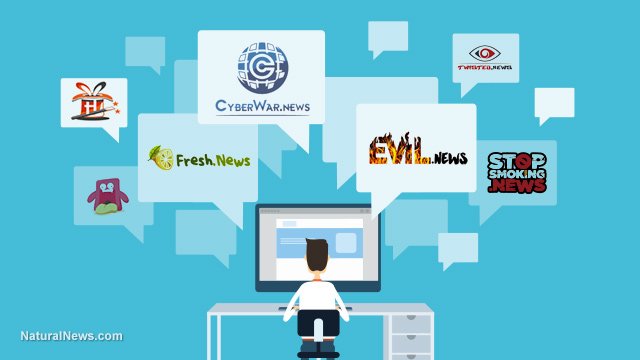New Writers, self-publishers, Struggle to Get Their Books Distributed « The Canadian Headlines Newspaper

Find out how: Drop us a line: editorial@agoracosmopolitan.com or orders@booksagora.com.
Viewpoint: Wholesalers and Distributors
by Marshall Chambers
This article presents perspective on the traditional book trade through the jaded eyes of a frugal author/self-publisher, one who took the time to examine the market and analyze some of the financial realities and risk-reward scenarios. The purpose is not to discourage but to cause insight, and begin introducing concepts to self-publishing-bound writers to consider in developing distribution alternatives.
For first-time author/self-publishers, developing a business relationship directly with a major distributor is virtually impossible. Without proven writing success or celebrity status, distributors can’t afford to be interested; they work for major publishers that commit their reputations and costly, well-designed promotional plans to impact the book trade. Any effort a distributor puts forth with its sales force and catalogs must be supported by significant publisher commitments to promotion. On top of that, self-publishers can rarely afford the basic economics of such a relationship anyway; for example, if you think a 15% of cover price a fair profit, and 65% an average commission for a distributor, then your books would have to be printed and delivered to the distributor for 20% of the cover price. And remember, you’ll be financing the consignment business; that means thousands of books printed if you want to be in the bookstores and provide a working inventory for your distributor and your promotions.
In a similar vein, the major wholesalers, Ingram Book Group and Baker & Taylor, don’t usually develop direct business relationships with small self-publishers; for example, recently Ingram had a policy of considering relationships with publishers that had ten or more titles to offer. But it’s worthwhile for self-publishers to be familiar with the basics of these relationships by reviewing information on their websites, http://www.ingram bookgroup.com/ and http://www.btol.com/.
As a side note, it is true that most Internet Publishers, or “Vanity Presses,” have developed business relationships with these major wholesalers and their digital printing subsidiaries. Teaming up with an Internet Publisher can allow the quasi-self-publishing author access to the wholesaler/major-bookstore market through print-on-demand technology; but this is a topic for another article.
In general wholesalers are nonexclusive order processors for the book trade, libraries and bookstores. Many small and regional wholesale companies will work directly with small publishers and self-publishers at a cost of around 50%-55% of cover. Even Amazon.com could be considered a wholesaler; through its Advantage Program it charges author/self-publishers 55% of the cover price for posting a book presentation and facilitating sales on its website, and the self-publisher pays for packaging and shipping books to Amazon. The only good news, aside from the huge plus associated with market exposure through Amazon, is the absence of a large inventory requirement and consignment risks; for the most part books are delivered as they are sold, the publisher filling orders from Amazon based on actual sales.
Risks and Rewards
It’s important for self-publishers to understand the risks and rewards of relationships with distributors and wholesalers. When I took a close look at the market in preparation for publishing Creative Self-Publishing in the World Marketplace, I was convinced the financial risks were too great and the potential profits too lean.
To effectively enter distributor/wholesaler relationships, you need the capital to support the traditional operations of the book trade. This means you pay up front for printing runs of your book to satisfy your promotional requirements, a distributor’s inventory requirement and bookstore stocking levels. That translates into thousands of books out there. Can you afford such a first print run—perhaps $10,000-$20,000?
What would happen if your book suddenly took off, and bookstores all over the world started to up stocking levels? You could be talking $50,000-$100,000 for a second print run. You should be prepared for that possibility; so where would you get the capital? Banks won’t make loans with bookstore orders as security because bookstores don’t pay for the books until they are sold.
Now, ask yourself if you can afford to finance the return of a capital investment over the time inherent in dealing with the layers of the consignment business. If you borrow funds, don’t forget to add in the credit costs. Are you prepared to absorb the cost of credit or loss of investment opportunity for 120 plus days (from the time of sales at the bookstores, not from the delivery of the books to distributors or wholesalers), given the accepted scenario of payments from credit-stretching bookstores to wholesalers, then to your distributor, and finally to you?
What about the cost of returns? In the August 2001 Publishers Marketing Association Newsletter, some self-publishers reported experiencing book returns of up to 30%. Each bookstore seemed to have had its own determination of sales levels that triggered returns. Also, be aware that general industry experience shows that 10%-30% of returns will be damaged. I’ve read that returns can be as low as 15%, but can you even afford that?
What about the industry trend: bookstores, wholesalers, and distributors abruptly winding up business or going bankrupt? Can you accept the risk of write-offs from those potential bad debts, or the time and opportunity costs of changing partners in midstream?
Economic Perspective
The bare economics of employing a distributor or wholesalers are usually forbidding for the little guy. Without considering the costs of book creation and formatting, consignment credit, inventory maintenance, insurance, packaging materials, shipping, returns, damaged books, bad debts, and capital and time to create and execute an effective promotional plan, consider just for perspective: Today digital printing of a quality, four-colour trade paperback can be as low as about $4 each, assuming a 300-page book, a run of 1,000 (about $6 each for a run of 200), average setup costs, and shipping 1,000 miles. At a cover price of $18.95, and discounting 65% to a major distributor or 55% to a wholesaler, is what’s left sufficient to cover the other real and potential costs and provide a reasonable profit?
Valuable Services
On the other hand, distributors and wholesalers provide valuable services by presenting your book in a catalog, managing and storing inventory, taking and processing orders, handling and shipping orders, processing payments and returns from a variety of points-of-sale, and presenting monthly bookkeeping records (they usually don’t pay you for 90 days). Through name recognition, they bring credibility and efficiency to the ordering and handling process for booksellers and libraries.
But viable alternatives now exist to traditional distributors and wholesalers. Dan Poynter’s New Book Model tells us that today’s digital technology, business communication services, and the Internet make it possible for a savvy self-publisher operating on a shoestring to contract his or her printing runs, utilize a creditable, cost-effective fulfillment services provider, and promote to specific segments of a well-defined marketplace.
If you are interested in a relationship with a major distributor, consider sending a review-book, together with a completed application for consideration, to the Publishers Marketing Association’s (PMA), Trade Distribution Acceptance Program. If you are a PMA member, the cost was recently $50. Go to PMA’s website, http://www.pma-online.org/, for information about the program and an application.
About the writer:
Marshall Chamberlain is the author of Creative Self-Publishing in the World Marketplace (Grace Books 2004) and the unfolding ANCESTOR SERIES of Sci-Tech-Mystery-Thrillers. Media background information, downloads of pre-edit book chapters, and progress on the SERIES are available on his website: http://www.gracepublishing.org/. The Vendor of Record for Grace Books is BookMasters, Inc., http://www.atlasbooks.com/marktplc/01123.htm, 800-247-6553. Contact Marshall at author@grace publishing.org.








